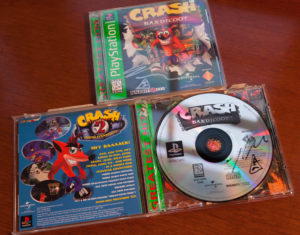I’ve official “sold” all 100 tickets in ROUND ONE of the Naughty Dark Contest. So I fired up the Ruby interpreter and asked it to compute the appropriate pseudorandom number, which turned out to be 6.
Counting from zero − I’m such a programmer − this turned out to be a ticket owned by Dorothy Beecher of New York!
She chose the following for her prize: A signed copy of The Darkening Dream!
But just because ROUND ONE is finished, doesn’t mean you can’t win. Check out the rules and get submitting, round two is open. As soon as it sells out another 100 tickets, there will be yet another drawing. And the special prizes are available to anyone, anytime!
Which speaking of, Markus Grundnig of Austria is our latest special prize winner, having gone for the gusto and earned 25 tickets! He chose to get a signed copy of his (and my) favorite Naughty Dog game, Crash Bandicoot 2: Cortex Strikes Back.
Crash 2, besides being the most painful year of my life (1997), represents IMHO the pinnacle of Crash gameplay. Some might enjoy Warped’s crazy vehicles (and they were fun), but I for one, like the classic platforming intensity of Cortex Strikes Back. Having cleaned up the crappy Crash 1 save system, revamped the technology, and smoothed the gameplay, Cortex really shines. Although don’t get me wrong, it’s a real close call.











